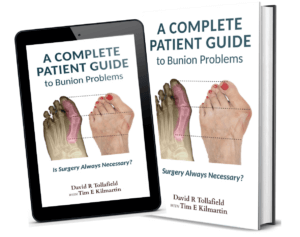What is Surgical Risk?
Surgical risk is simply the chance of a problem arising at the time of surgery. However, it can feature hours, days or even weeks afterwards. But what impact does this have on our lives? Do you know the impact of a surgical risk? We sit with the surgeon and sign a form, accepting that risk can arise. The surgeon’s task is to ensure you appreciate that surgery cannot be performed without something arising that may be unfavourable to your recovery. You hope you will be better or cured. There is a chance that surgery will fail or make you worse. Have you considered this?
In some cases, patients think it is the surgeon’s fault, but mostly, it is not; of course, someone must be to blame! The surgeon will explain as much as you want and need, but where do we stop? It is not unusual to be told as part of the risk death might arise. This is the incongruity of delivering health care. The surgeon has Damocles’s sword hanging over his head. Until something happens, the surgeon is often considered gifted and free of causing a problem. I am a retired podiatric foot surgeon but have been on the other side. Here is a case history from my experience. I presented for knee surgery. I knew the surgeon. He was talented, not too young or old and at the top of his game. I posed the question as a patient but with surgeon’s foresight.’
‘Are there any complex regional pain syndrome cases you have experienced?’
Complex regional pain syndrome (CRPS) is a rare but horrible condition, and I have seen plenty of it and have written about it.
‘No, I’ve not had one, but here is a paper I wrote on the operation,’ he passed me a research paper. I read it when I arrived home, and there, amongst all the complications that could arise, he had one case of CRPS. He had forgotten, so LOW was the risk. But the impact is HUGE! This condition is underreported. If I had developed CRPS, would he have been negligent? Yes, he failed to mention something I had asked him directly. Would he have been negligent in causing it? Not. CRPS happens through the body’s reaction to injury.
What’s the Worst-Case Scenario?
Well, you may not survive the operation. Is this the worst-case scenario? If you went in for bunion surgery, you would not expect to die. If you had heart surgery, then maybe you would appreciate that death does occur. After all, it’s an important organ, and many things can go wrong. It may surprise you to know that people do die after foot surgery. In one case a surgeon gave a medication the patient was allergic to. This, of course, would be negligent and not expected but could as quickly arise if the allergy was unknown. Of more relevance, a patient died of an overwhelming infection that caused septicaemia. This was called necrotising fasciitis, not to be confused with the usual common fasciitis in the foot. The flesh-eating condition occurs so swiftly death arises, and the heart stops. Both of these cases were rare. The first problem can be prevented by undertaking the World Health Organisation pre-surgical checks introduced into surgery in 2008.
The second problem is difficult to predict as it can occur in healthy patients. There is no way of knowing in advance if this can happen. This type of risk is very, very low, but the impact of such a condition occurring is very high. The same condition might require amputation of a leg. All of this is pretty remote from the planned surgery. We call this a Level 5 impact risk, and the Royal College of Podiatry first developed this system on a trial basis in 2010, launching it in 2014. I published the basis of risk and impact in two books, Morton’s Neuroma (2018) and A Complete Patient Guide to Bunion Problems (2025).
There is No Such Thing as Simple Surgery
The one thing everyone must appreciate is that there is no NO RISK. Some problems arise, and we expect, but these only have minimal impact. Such problems are not complications but inconveniences. Swelling and pain after surgery is expected and, as such, is a Level 1 impact risk. You may not get a shoe on after surgery, but you will in a few weeks, a month to three months, depending on the complexity of the operation. Of course, patient A and patient B don’t heal simultaneously. If swelling continues, it might shoot into a Level 2 impact risk. This is still minor in terms of the level 5 impact risk. If you had a phenolic nail surgery operation and expected the nail never to return, and it did, this would have a low chance of occurring, around 10-20% at worst. This is not expected but could happen, but the main impact would be that further surgery is required. This would count as a Level 3 impact risk.
Until now, levels 1-3 have been inconvenient and are known as sequellae. Features of surgery that are either common or do occur with some frequency. Levels 4-5 impact risks are somewhat different. We have already described level 5, but perhaps it is essential to understand what each means. Death is final and affects relatives rather than the patient. However, if you are left with a sequella that causes loss of limb, constant pain, reduced health quality, or life-shortening complications, these are undoubtedly worse. The previously mentioned condition of CRPS varies from a mild form to a severe form, and so spans levels 3-5. However, I would place CRPS at level 4 when discussing matters with patients. I want to try to have them understand what could happen and if they wish that risk.
The impact goes further and affects income, causes depression, leads to job loss, and strains marriages. Additionally, mobility is affected, and hobbies have to be dropped. The surgeon may say this is a 1% risk, but the impact is 100%. High risk, as in 1-3, maybe 20%, but the effect may be low, at say 5%, and temporary. High-impact risks are often permanent and, at best, long-lasting.
You can download a Guide to PASCOM-10 and the risk impact with further details (2018). This is a unique consent guide because it removes some of the misunderstandings from the consent process.

Now, Tim E Kilmartin and I have captured tales from the US and UK in our new book, which is out in hardback and, from 8 January 2025, in paperback and digital format (Kindle and tablet). To learn more, listen to David discussing the book on his site.
Click here ‘NEW BOOK‘
Thanks for reading ‘How Does Bunion Surgery Impact Our Lives?’ by David R. Tollafield.

David is a retired podiatric foot surgeon and author
Published by Busypencilcase Reflective Communications Est. 2015
June 2021. Updated 23 January 2025

Produced for ConsultingFootPain


Recent Comments